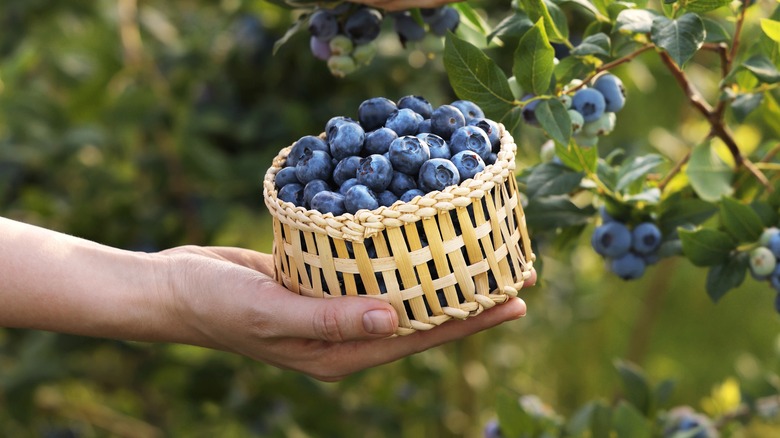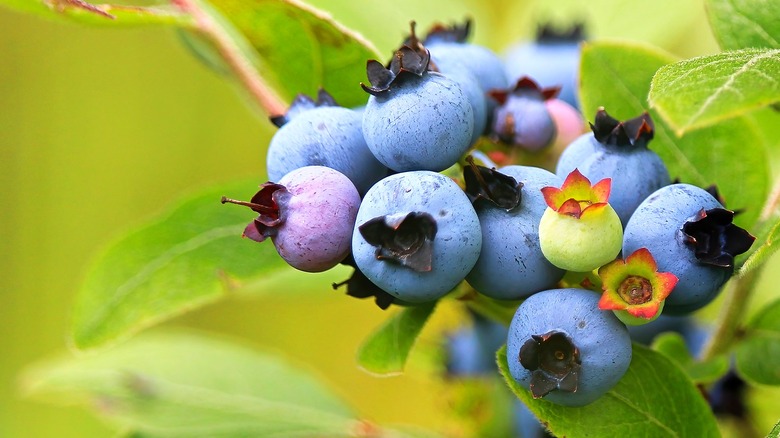Do Wild Blueberries Actually Taste Different?
Blueberries are characterized by their sweet yet tart taste and presence in treats like muffins, pies, and scones. They can also change the color of your baked goods to a vibrant shade of purple or transform the flavor of your smoothies. Cultivated blueberries are a convenient choice for so many dishes, with many of their farms located in the United States.
While New Jersey was the first to cultivate them on a commercial scale, we can thank Washington for growing more than any other state. They're a high-demand fruit with specific farming and cross-continental distribution systems.
Depending on where you're from, wild blueberries might be growing in your home state. They're indigenous to North America as a part of the Vaccinium genus, and the wild blueberries you find out in nature could very well have a different taste or texture in comparison to the pint you find at the store.
Yes, wild blueberries can taste different
Wild blueberries, or Vaccinium angustifolium, are the "lowbush" blueberries that have grown in the Northeastern U.S. and Canadian barrens for over 10,000 years. These deciduous shrubs are not planted — while they can be maintained and cared for with human intervention — they must grow wild. People love these little fruits for their health benefits, as they're antioxidant and vitamin-rich. Cooks love them for their distinct taste.
The Wild Blueberry Association claims that wild blueberries have a more "intense, sweet and tangy taste" than the larger commercial variety. To prove their worth in the kitchen, the organization hosted a Maine Wild Blueberry Chefs Challenge, where experienced chefs put these berries to the test in a cooking competition. The winning dish used wild blueberries to poach a lobster and as the base for the microgreens' vinaigrette.
Wild blueberries have a lower concentration of water than the Northern Highbush or New Jersey blueberry species. Less water content equals more flavor — there isn't unnecessary filler in each bite. Smaller blueberries retain their punchiness and have more pulp within their skin. They can also be extra sour or sweet, creating a wider — but more inconsistent — range of flavors. Commercial blueberries are going to have more standards for grades on shape, size, color, and texture. Wild blueberries are frozen immediately upon harvest so that you can enjoy them any time of year. Check your freezer aisle or local farmer's market in season to find the best blueberry for your taste.

